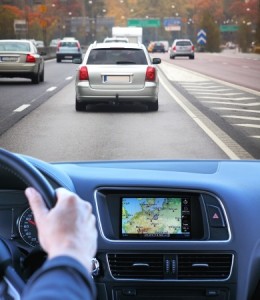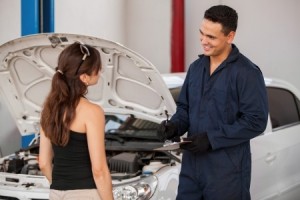 It seems like we’re locked in a never-ending loop of polar vortexes in Minnesota, and when the weather dips below freezing it can take a toll on your car’s battery. If you park your car outside during the winter, chances are you’ve had to jump your car or help someone else jump their car at one time or another this winter. Since temperatures are expected to remain below freezing for the foreseeable future, we thought we’d provide the correct method for jumping a vehicle in case you run into some trouble.
It seems like we’re locked in a never-ending loop of polar vortexes in Minnesota, and when the weather dips below freezing it can take a toll on your car’s battery. If you park your car outside during the winter, chances are you’ve had to jump your car or help someone else jump their car at one time or another this winter. Since temperatures are expected to remain below freezing for the foreseeable future, we thought we’d provide the correct method for jumping a vehicle in case you run into some trouble.
1. Safely Flag Down Another Motorist – Odds are you’ll on parked on the street or in a parking lot when you realize you need a jump, but it’s important to stay safe when trying to flag down someone to help. Try to get someone’s attention while on the sidewalk, or head to a neighbor’s house to ask for assistance.
2. Turn Off Both Vehicles – Although it’s not absolutely necessary to turn off the good car’s engine, doing so is the safest way to prevent accidental damage or injury. Once the vehicles are parked near one another, turn off the engine and pop the hoods.
3. Locate the Terminals – Before you start hooking the batteries together, locate the terminals on both batteries. Find the positive (+) and negative (-) signs on each battery. If you don’t see a sign, the terminals should be designated by color. Red symbolizes the positive terminal, while Black represents the negative terminal.
4. Positive First – Now you’re going to complete the process of creating the circuit. Begin by placing the red jumper cable on the positive terminal of the dead battery*. Once that is placed on the dead terminal, clamp the other end of the red cable the to positive terminal on the good battery.
* Note – Not all jumper cables are Red and Black. It doesn’t matter which color you hook up to the terminals, SO LONG AS YOU REMAIN CONSISTANT. For instance, if your cables are Yellow and Green, designate one color to be positive and the other negative. If you designate Yellow as positive, make sure you only hook up the Yellow cable to the positive terminals, and vice versa. Attaching them incorrectly can seriously damage both vehicles.
5. Negative Next – Once the positive terminals are taken care of, move onto the negative terminals. Take the Black cable and attach it to the negative terminal of the good battery. The cables are now live, so be careful not to touch the exposed metal on the opposing clamp.
6. Ground The Last Clamp – Attach the other Black clamp to a metal section of the bad car’s engine block away from any moving parts. Usually there is a block or a metal bracket that you can use. This is called “grounding,†and it will prevent any potential sparking that could occur if you hooked up the final clamp to the negative terminal on the dead battery**.
** If you can’t safely clamp the opposite end of the Black cable to a metal section of your engine block, you can clamp it to the negative terminal of the dead battery. Remember, you’re holding live cables, so attaching it to the negative terminal of the dead battery will likely cause a few minor sparks. These few sparks are rarely an issue, but problems can occur if there is a gas or fluid leak under the hood.
7. Start the Good Car – Once everyone is away from the vehicles, start the good car. Let the good car run for a minute or two so electricity can flow through the batteries.
8. Start the Bad Car – Try to start the car with the bad battery. It may take more than one try, and it can help to lightly press the gas pedal while turning the key. If your car sounds the exact same as it did before you tried to jump it, one of your cables may not be touching the terminal. Turn off both cars and make sure they are clamped on tightly.
Once your car starts, remove the cables in the same order you placed them on, using caution as you go. If you can’t get your car to start, call a local auto shop or AAA for help.
Two things to take away from this article are:
- Always attach the same colored cables to the same terminals; and
- Remember the hook up order. Bad (+), Good (+), Good (-), Bad (-).
If you have any questions, or if you’re in need of a new battery, give Affordable Auto Service a call today!


 Sales of self-driving cars are expected to grow from 230,000 in 2025 to nearly 12 million by 2035, a new study suggests.
Sales of self-driving cars are expected to grow from 230,000 in 2025 to nearly 12 million by 2035, a new study suggests.